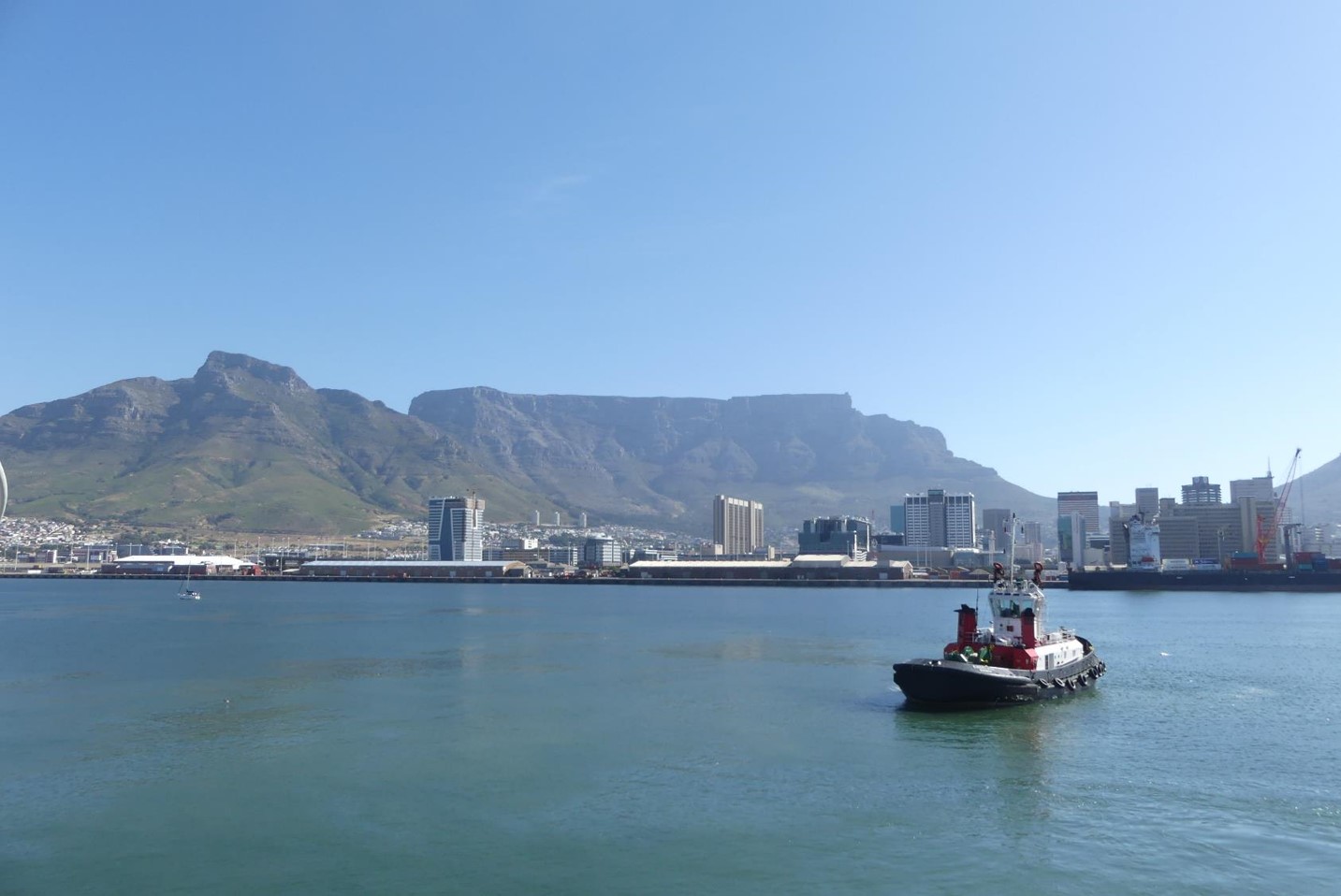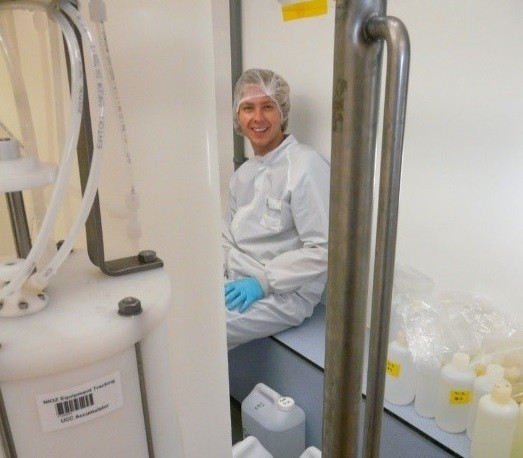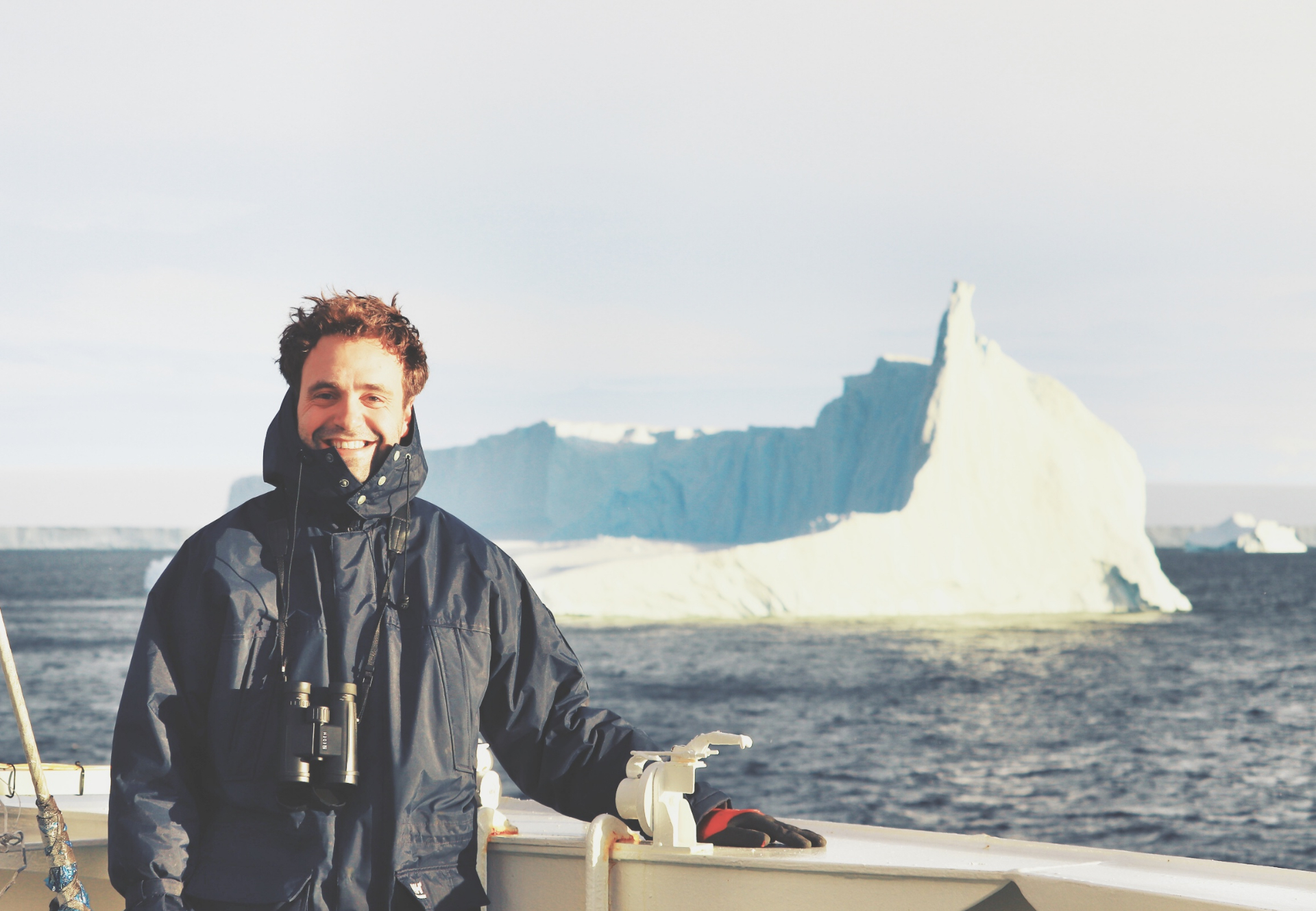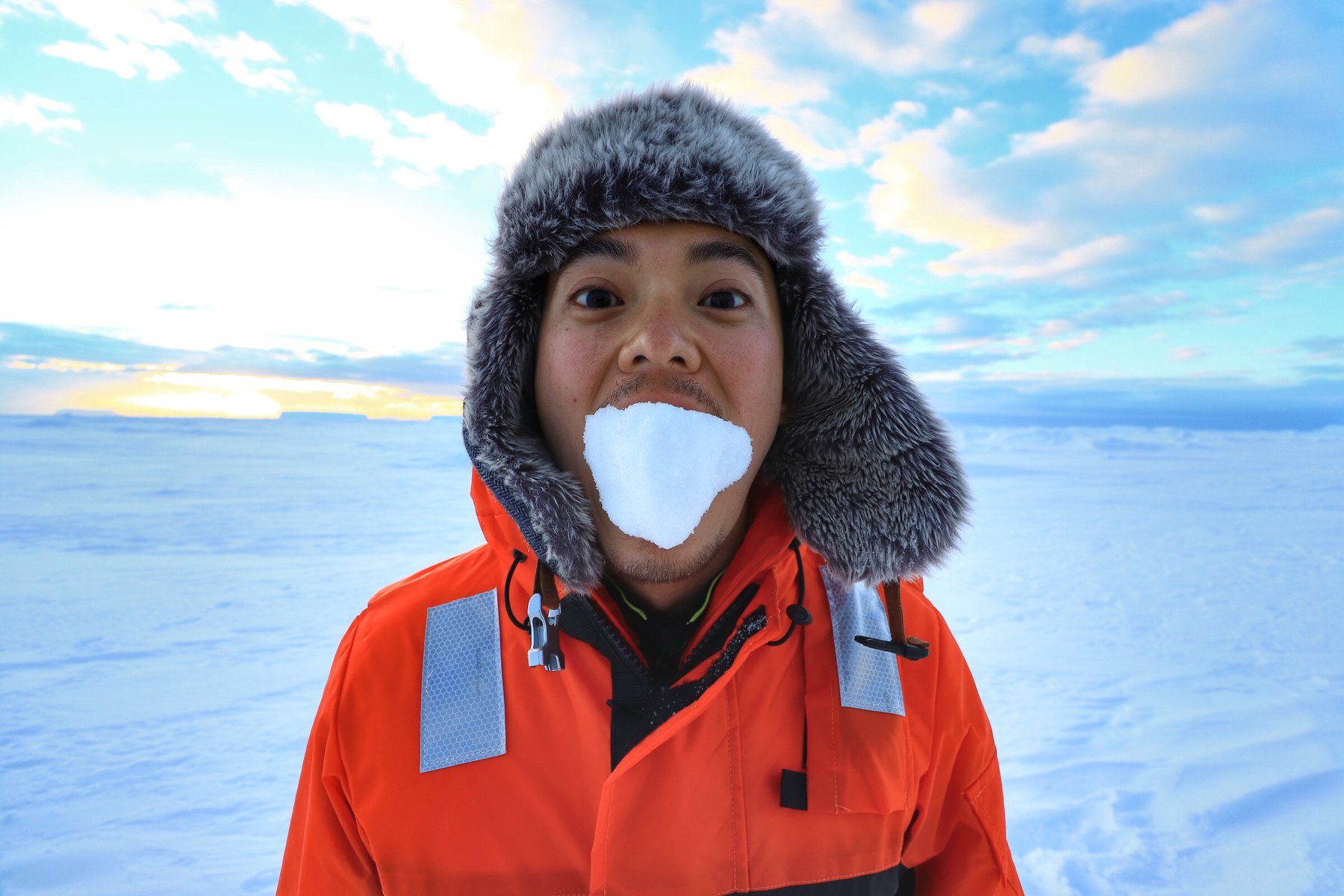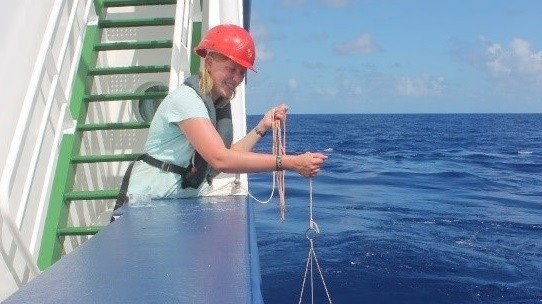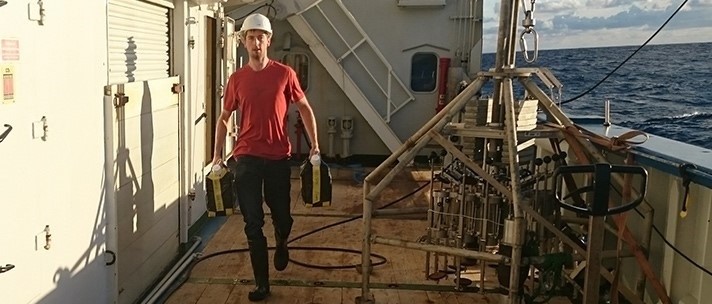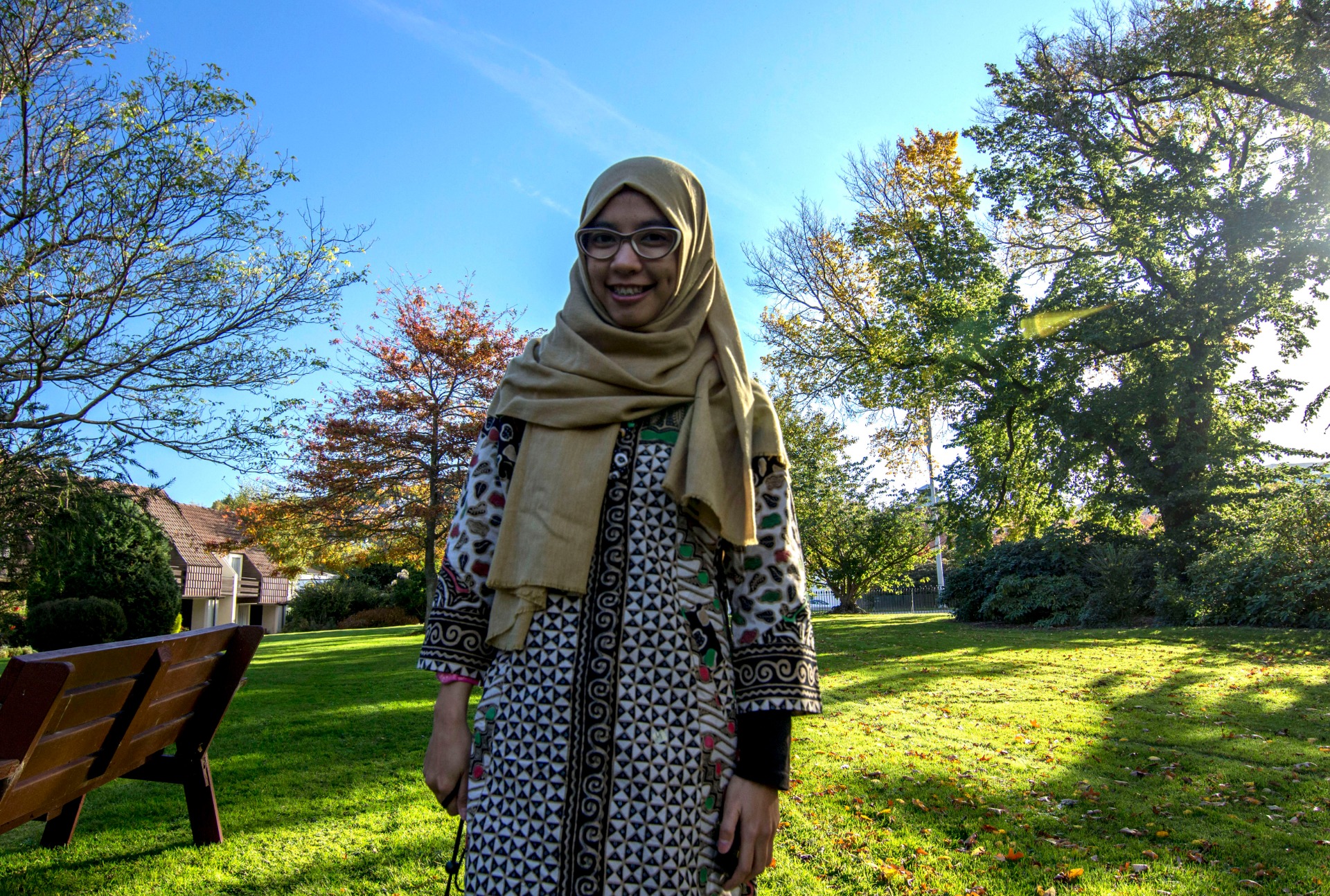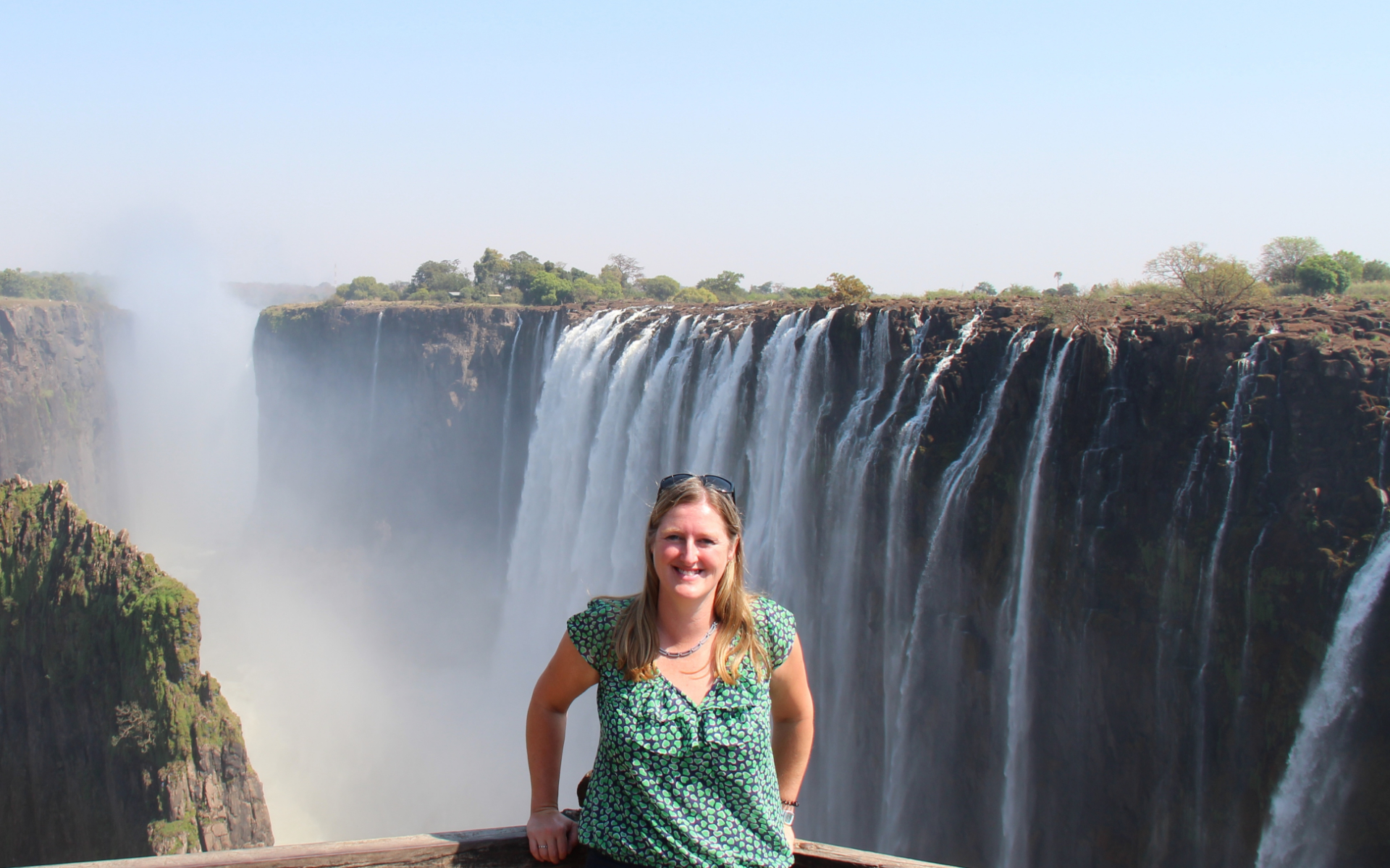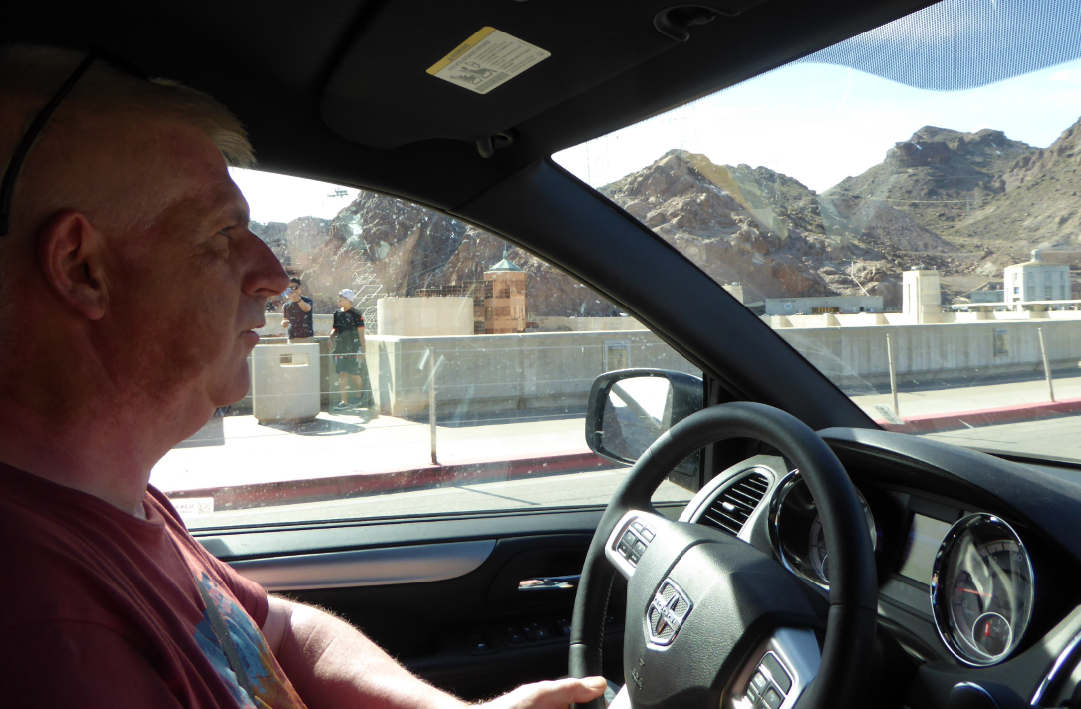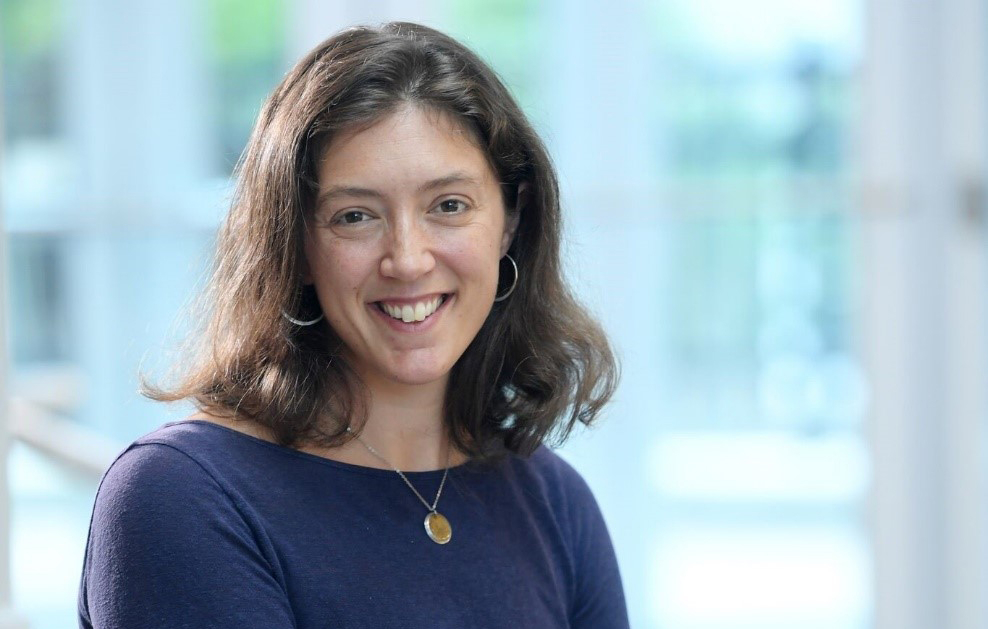Over FePhyrus: IJzer (Fe) en virus infecties op Antarctica
Klimaatverandering gaat snel in Antarctica, met name in de kustgebieden aldaar. Algen, de basis van de voedselketen in zee, hebben het rondom Antarctica al moeilijk door een gebrek aan ijzer en sterfte door virusinfecties en worden nu ook door een temperatuurstijging bedreigd. De temperatuurstijging beïnvloedt zowel de toevoer van Fe door smeltende gletsjers als de groei van algen en virussen. Dit onderzoek wil het effect van deze veranderingen bestuderen en daardoor beter begrijpen hoe dit unieke ecosysteem reageert op de klimaatsverandering. Van 15 december 2018 tot 7 februari 2019 is de onderzoeksgroep actief op de RV Polarstern van het Alfred Wegener Institute (AWI). Dit is een internationaal project, zoals eigenlijk bijna al het polaire onderzoek, dus de rest van dit blog zal in het Engels zijn zodat het voor iedereen begrijpelijk is!
About FePhyrus: Iron (Fe) and virus infections in Antarctica
Climate change is happening fast in Antarctica, most notably in the coastal regions of Antarctica as temperatures are rising and glaciers are melting rapidly. Phytoplankton form the basis of the food web in the ocean and take up atmospheric CO2. In the oceans and seas around Antarctic, these microscopic unicellular plants have no easy life due to scarcity of bio-essential iron and mortality due to grazing and viral infections. On top of that, they are now facing rising temperatures as well. This temperature increase affects the supply of bio-essential iron from melting glaciers as well as the growth of phytoplankton and viruses. Any change in the basis of the food web will have consequences for the entire ecosystem and the amount of atmospheric CO2 taken up. Thus further investigation is needed to unravel the role and cycling of iron and assess how rapid warming affects the ecosystem. And this is exactly what we aim to do in our FePhyrus project!
Last year we boarded the research icebreaker Araon from the Korean Polar Research Institute for an expedition to the Amundsen Sea, Antarctica. This year we will embark on another expedition to the Antarctic, but to the other side of the continent. We will depart from Cape Town (South Africa) aboard the research icebreaker Polarstern from the German Alfred Wegener Institute (AWI) and make our way to the continent and the German research station Neumayer III. Thereafter we will cross the Weddell Sea before crossing Drake Passage and finishing in Punta Arenas (Chile). We hope to collect many samples and perform several experiments in the Southern Ocean and Weddell Sea. This year we will be with an even larger team than last year; Erin Bertrand from Dalhousie University will replace Scott McCain and Indah Ardiningsih, Sven Ober, Sharyn Ossebaar from NIOZ will join the team as well. In this blog you will be able to follow our expedition to this remote, but absolutely stunningly part of our world.
February 10th | Reflections
By Rob Middag
Another expedition has come to an end. Everything is packed, and the ship is in the harbour of Punta Arenas waiting to be cleared by customs and we are eager to get back onto solid land. It was an absolute privilage to be able to lead such an outstanding team to do research in this very special and remote part of the world. The magnificent wildlife, breath-taking scenery and sheer power of the ocean and ice remain absolutely amazing, no matter how many times one sees it. Antarctica is one of the most pristine environments on earth, but unfortunately even Antarctica is impacted by human activities. Pollutants and plastic make their way into this region and climate change is having profound effects on the ice sheet and the ecosystem. The consequences are hard to predict, so expeditions like ours that make a contribution to our understanding of the Antarctic system and how we are affecting it, are direly needed. And it is my sincere hope that the increase in knowledge that we worked very hard to obtain - over the last seven weeks and will obtain in the years to come from the samples and data still to be analysed - leads to more understanding and awareness. After all, we only have one planet and an expedition to the Antarctic and stormy Southern Ocean definitely teaches you that you have to respect the beauty and power of our planet!
Last but not least, I would like to thank my team on board, but also everyone else who made this expedition possible. The officers and crew of FS Polarstern as well as our fellow scientists, notably chief scientist Olaf Boebel, made the shipboard work not only possible, but also a very memorable experience of companionship and teamwork. The Netherlands Organisation for Scientific Research provided the required funding, and our colleagues at Royal NIOZ were absolutely crucial in the preparations before, and support during the expedition.
We left family and loved ones behind to work in the Antarctic and contact was often intermittent. So now I am very eager to get back home to my family. Their messages of love and encouragement to get me through the tough bits of the expedition were invaluable and I cannot wait to enjoy some quality time together!
By Erin Bertrand
This was my eighth trip to Antarctica, and I think it will never get old. The beauty of this part of the world, it's harshness and it's richness, are a part of me now. This expedition was hard work, fun work, and productive! It was so rewarding to be part of this excellent team and to meet such great new friends and colleagues. I'm so grateful to have been part of the team.
Reflection haiku:
A sail to remember
Antarctica has my heart
Grateful for the team
Sharyn Ossebaar
When you think of ice floating on water it is hard to believe how utterly magical that can actually be. The pureness and beauty of Antarctica is something we can all learn from to make sure that we keep our planet this way. This cruise will have a special place, with many 'first times' to see so many things with such a great bunch of people. It's time to leave and spread the word about this inspirational place.
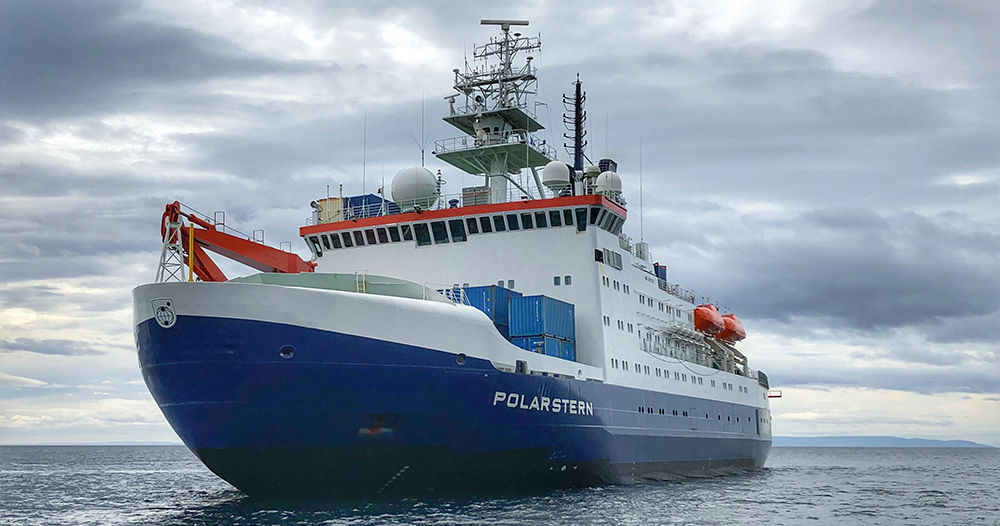
Stanley (Hung-An) Tian
Time flies, especially when you focus on science. After seven and a half weeks on the Polarstern, we are going to disembark in Chile in one hour.
It feels like a wonderful dream and it seems that we were boarding this fantastic ship just yesterday. During the whole expedition, I always asked myself the same question: why do I want to pursue a PhD in oceanography? The question was finally answered after the last sampling event. Here is my opinion: FINDING QUESTIONS, AND SPENDING YOUR WHOLE LIFE TO ANSWER THEM IS AN ENJOYABLE THING.
As a sea-going scientist first, you come up with the questions of interest to be answered, then you start doing background research. Hopefully you have the chance to do field work for sampling (this is one of the hardest parts, because you need to have the ability to respond and change plans quickly aboard as the circumstances at sea are unpredictable). Then, with a bit of luck, you get the precious samples to analyse at home. Eventually you can tell the world the interesting stories of your results. This entire process could take years and is pretty difficult, yet this is the most fascinating part to me.
I am very glad that we have had a successful trip, with the help from our NIOZ team, the whole Polarstern crew and all scientists who were aboard.
Like Indah said in her blog: the expedition is going to be done soon, but the science will continue. See you next time, our beautiful ocean!
Charlotte Eich
What a journey! I am very happy to have collected many samples (I have over 4000 samples to analyse back home at NIOZ) and that the cruise was so successful, despite some of the problems we had to overcome. In general, it was a great experience to be a researcher on Polarstern – one of my childhood dreams has come true. Now I am looking forward to having a closer look at my samples, once they arrive on Texel. Polarstern will arrive in Bremerhaven this summer, so only then we can pick up all our research equipment and samples and finally start the most interesting bit of our research – analysing and interpreting the data – what a great time to look forward to!
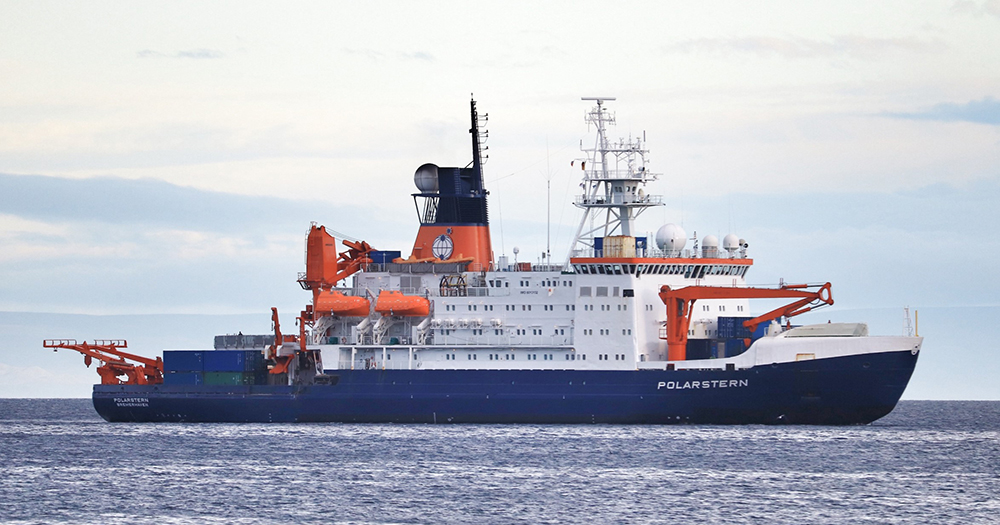
Indah Ardiningsih
Visiting the Antarctic makes me realize how busy this frozen land is. Despite its freezing temperature almost all year around, there is just so much going on. I have seen so many penguins, some seals and whales; how amazing to witness this wildlife with my own eyes. From the science meeting, I know now why the whales in the animation movies speak so funny, they communicate by transmitting specific frequency (and here on board, some scientists study this).
Additionally, living on the ship also makes me appreciate many things I can do on land. It is sad to say goodbye, yet I’m super excited to come back to land again (with civilization) after 54 days at sea.
With a photo present from Charlotte and Sven Pont, now I have proof to say:
“I’ve set foot on top (of Antarctic ice) of the bottom of the earth”
Sven Pont
It is almost time to leave the ship and to reflect this rollercoaster at home. I can say that it was really awesome in many ways, such as a great amount of science done, many created friendships and awesome views of sceneries and wildlife. Time to go home now!
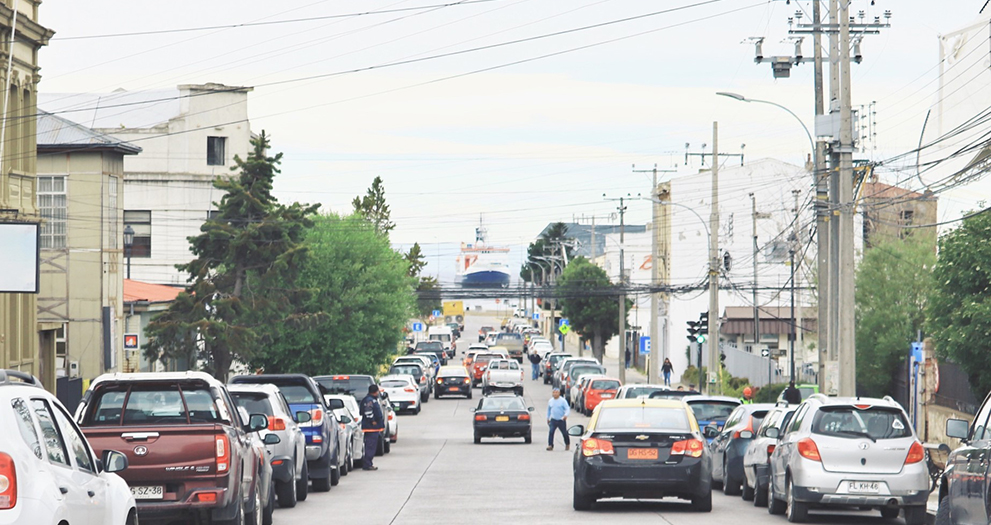
February 7th | PS117, day 49: 2+3 more days to go
We arrived in a bay of Elephant Island in the early morning on Saturday, February 2nd. We could see an astonishing view of mountainous land covered by snow from the ship (even from my cabin windows). And this location is marking the last days of science work of this expedition. While I am writing this blog, it is less than 7 days to go, “Day 49: 2+3 more days to go”, which means 2 more days for science and 3 more days to pack everything. This is the way that the chief scientist counts our expedition days. The big logo of PS117, the day and this number are always on the first page of the slide of the daily science meeting every evening, to remind us how far we have come and how many more days remain.
We had our sampling stations very close together in the Weddell Sea. We planned to have 11 depth profiles towards the Antarctic Peninsula, 11 UCC casts within 5 days. We had the last three stations in a row, 2 stations at January 31st late in the night and 1 station early in the morning of February 1st. There was only a 2 hour gap in between the casts, yet, we made it entirely in time. Mathijs, Stanley and myself had a very sentimental feeling towards our UCC, as for us, this would be our last chance subsampling seawater samples from our ultraclean sampling system during our PhD projects.
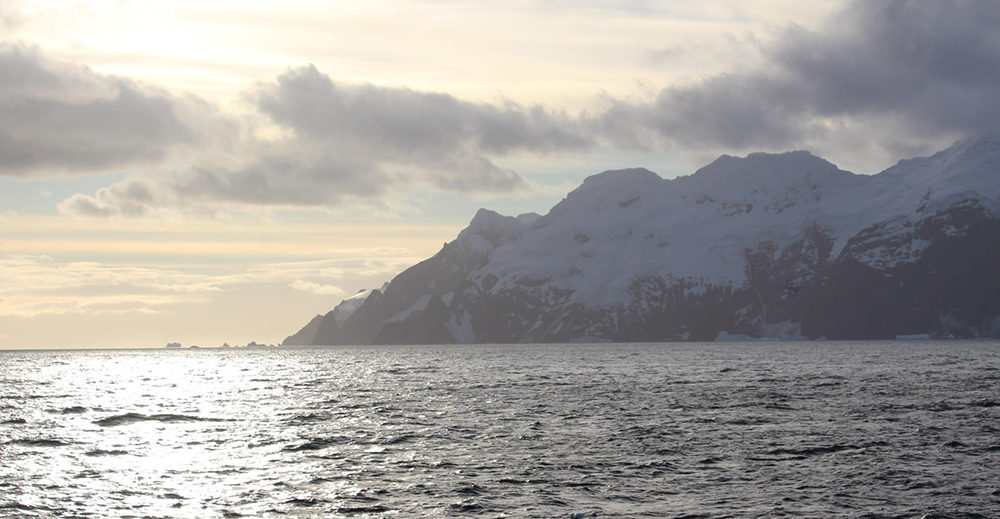
Being part of the FePhyrus project is never boring. Besides tons of works on the ship, there is plenty of laughter too. Vividly alive in my mind are the first few days onboard, I was struggling with the cold and being seasick, and at the same time, I had to set up the voltammetry instruments that I use to quantify iron-binding ligands during this expedition. It was not an easy job to set up the voltammetry instruments on a moving ship, with the wild waves hitting the ship from all directions. Moreover, the vibration generated by the vessel often affects the voltammetry signal during the analysis. Fortunately, I got remote support from Loes Gerringa at NIOZ during this expedition, to get the best results possible.
Indeed, time flies when you are on the ship. Just like the blink of an eye, we are in the last week of the expedition, approaching the end. I am very excited to see the land again after being 7 weeks at sea. Yet, I am also going to miss the dynamics of the teamwork (and the friendships on the ship). It’s time to say goodbye to the Antarctic sea ice. Although the expedition may come to an end soon, the science must go on as we will have tons of samples to analyze when we are back at NIOZ.
Indah Ardiningsih
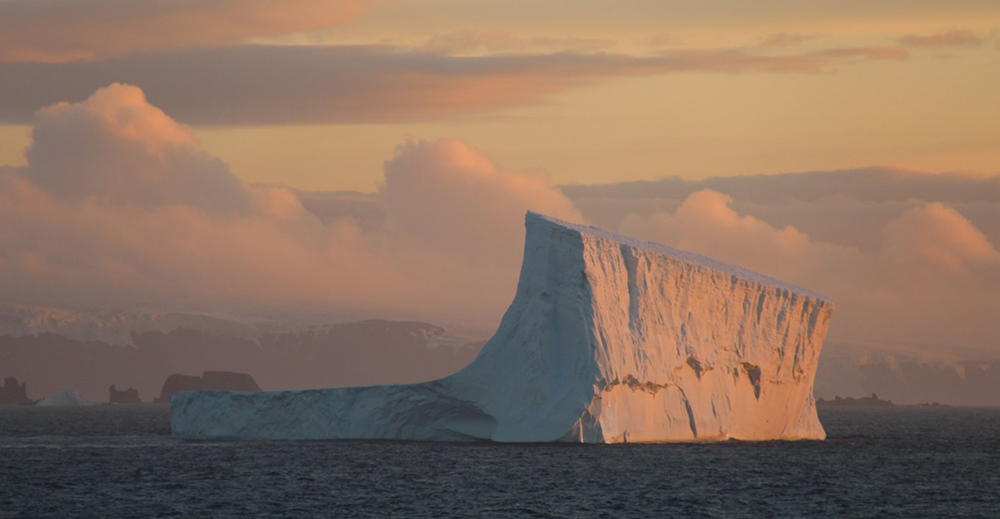
January 27th | Measuring dissolved Fe concentrations
It has been a while since we left Neumayer III. I can still remember the moment when the people from Neumayer III waved to us while we were leaving. It feels really great that people from all over the world are dedicating themselves (ourselves) to one goal – science – no matter where they (we) are and how difficult it can be.
After Neumayer III, we have got a bit of less busy period before we arrive at the transect near the Western Peninsula, which means we are able to focus on doing shipboard measurements. Mathijs and me have been really gentle taking care of our FIA instrument (we called her Hammy) which is used to measure the dissolved Fe concentration, as she is really temperature sensitive. If she is not in a good mood (e.g. if the temperature in the container varies), then she will refuse to measure for us by giving us not-so-good data. Fortunately, since our analytical container has been moved inside the ship when we were at Neumayer III, Hammy is behaving very well (probably feels more secure inside the ship) and gives us better data. Now Mathijs and me are sitting together looking at the data of the Fe concentration in our bioassay experiments, that, as Erin mentioned in the previous blog, have been quite successful experiments. We are looking forward to combining all the parameters we have measured/will measure for those bioassay experiments, and to be able to tell an amazing story about how phytoplankton behave in the warming ocean and how they respond to the increasing Fe supply to the water.
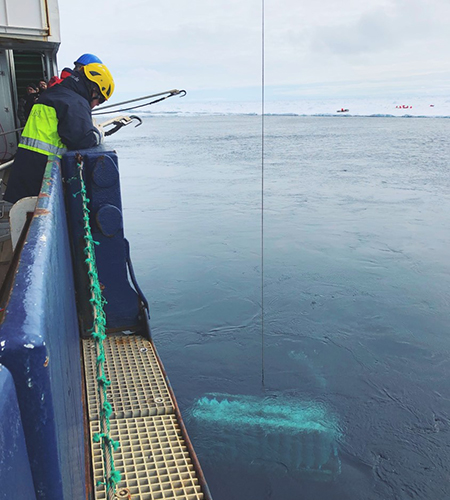
In addition to making measurements, I really enjoy the short breaks after we finished our work and sit together to have a coffee/tea/milk. We chat about life, funny things we have done in the previous expeditions, and what else we will do during the expedition – Erin and Rob came up with an idea for an additional bioassay experiment with elevated iron and manganese concentrations in the seawater. Hence, we are not bored at all while the ship steams to the West Peninsula where we will start sampling nonstop until the end of this expedition. There are less than two weeks left before we arrive in Punta Arenas and besides finishing the sampling as planned, we will definitely cherish our time on board and enjoy the food and amazing scenery, as well as the good company.
Stanley
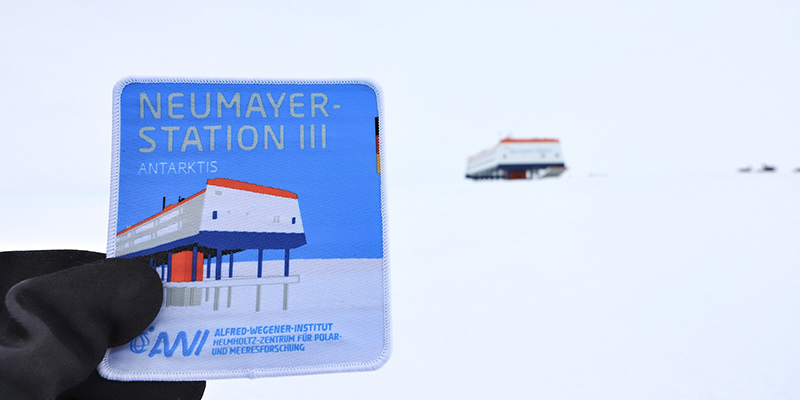
January 24th | Different flavours of science
It is Thursday 24th of January, we are surrounded by ice sheets once more, it is a bit cloudy but the temperature and wind are not extreme. Very nice circumstances to enjoy the Antarctic scenery for a long time. Yet, I am writing this blog in the morning sitting on top of a freezer in front of a blue cold room container while filtrations are running inside. The writing is done in short bursts as I have to get back inside into the 0°C frequently as I want to prevent a splash zone (tubes can potentially pop lose from the filter cartridge connectors and release all our precious seawater with all their hidden mysteries of this region).
The seawater currently being filtered, was retrieved earlier after breakfast from the incubators outside. On our way towards the incubators, Charlotte and I already noticed a snow shower decreasing our view of small ice sheets on the horizon very quickly. Soon after, it began to snow and we enjoyed the experiencing of performing science in the Antarctic snow. Small snowflakes all around shifting directions very fast in every direction as the vessel-introduced air disturbance. It made the snowflakes going crazy, which was quite fun. Back inside while filtering the water in the cold room, it does not actually feel cold. I have a very nice warm suit and a warm hat that are keeping me comfortably warm for many hours straight. When getting out of the cold room and back onto the freezer again, it is noisy from the running vessel engines and the smell of oil and metal gives an extra flavour to the experience of working on a ship. Regardless of the nice scenery outside, the goal of learning more about the little guys that take up carbon dioxide and produce oxygen in this remote and important region, the phytoplankton, makes the work enjoyable and the whole situation perfect.
While sitting here and looking around it shows how diverse the performed research is on this vessel. On both my left and right are two other cold rooms with inside it, Antarctic fishes swimming around, ice core science, diatom (phytoplankton species) science and in the last one colleagues are investigating bacteria. The dim light of the corridor is bright enough to see the form hanging on the outside of each cold room door that details which chemicals are used inside. This makes it clear everything is well organized and efficient on this vessel, which fits the reputation of our German hosts in my opinion. The atmosphere they create is ‘gemütlich’ and people are very friendly and funny!
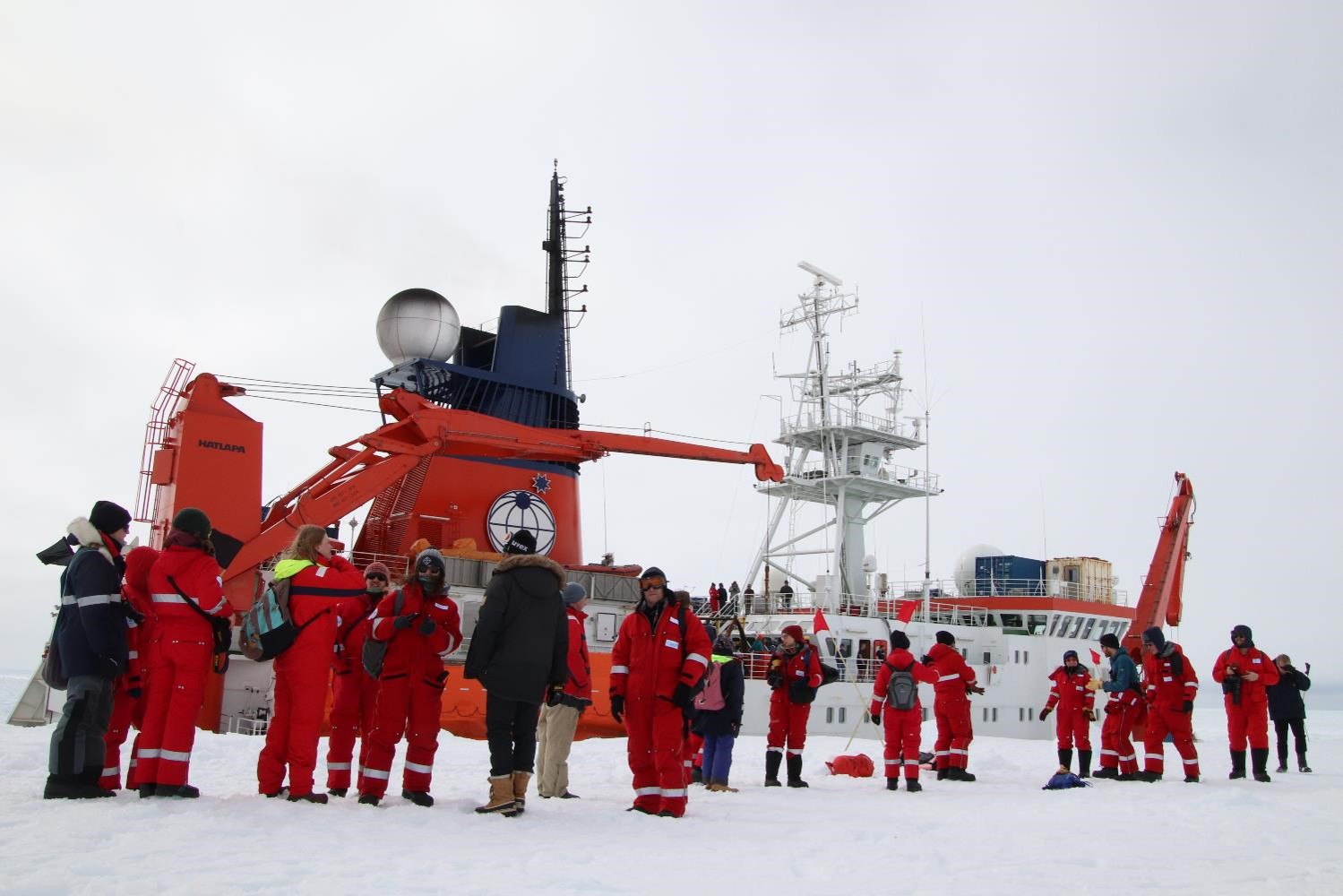
A busy time is coming up with lots of filtration work and irregular moments of sleep, but I am sure I will manage. With the amount of energy obtained during our 3 day stay at the ice edge I am ready for anything. It was so awesome!! A visit to the Neumayer III research station and getting a glimpse of how life is there, visiting their garden with fresh vegetables and spices – the taste was familiar but the atmosphere made it much nicer, seeing an Emperor colony – how awesome is that, driving the pisten-bully and a snow adapted Toyota pickup truck – what a chance, experiencing total silence (except the one moment a penguin in the distance shouted something), playing soccer on the ice, walks in the snow, rolling in the snow, eating some snow, throwing some snow, and of course the magnificent stretched-out views filled with all the visible colours of the rainbow combined: white. I think I can manage some heavy working days now. They will be nice.
With almost two weeks to go on RV Polarstern, this awesome journey is nearing its end. There is so much we have done, so much we have seen, so much we have endured and enjoyed. Looking back so far, it has been an unforgettable one-and-a-half months. And looking ahead, I will filter much more special water with many happy microbes this week!
Sven Pont
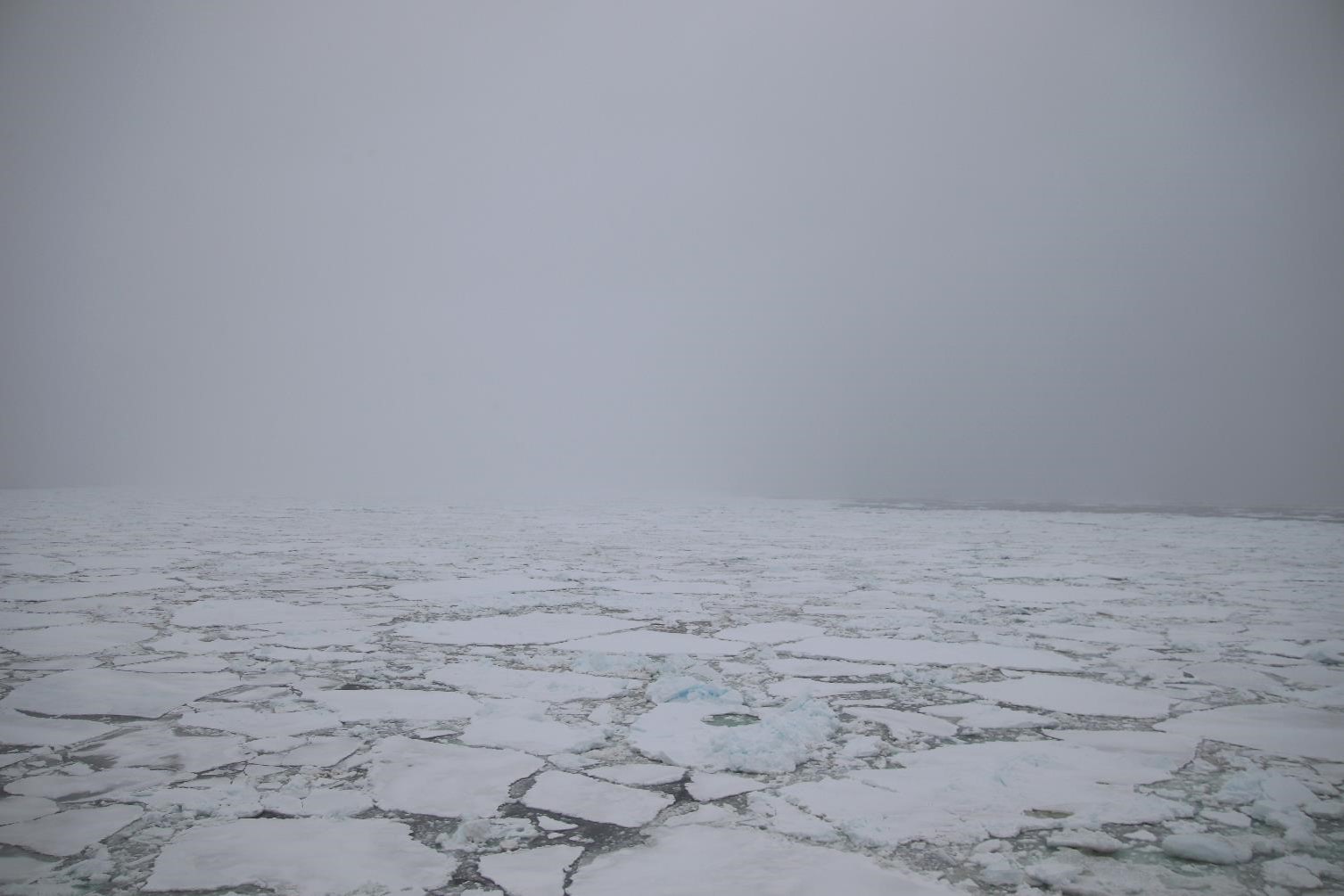
January 23rd – Beautiful Antarctica at Neumayer III
What an exciting time we had! After all the station work on our journey down to Antarctica, we finally arrived at the set destination: the North-Berth of Neumayer III – the main German research station in Antarctica. Polarstern is the supply vessel of the station, so this is why I call this our set destination, even though it is only halfway through our expedition and the final destination will be Punta Arenas.
During our stay on the ice shelf, we were allowed to get off the ship, so we took the chance to explore the surrounding. It was absolutely stunning. The scientists were split into two groups to visit the actual station – an amazing experience: we were picked up by “Pisten-Bullies”, which dragged a sleigh behind (nothing more than a trailer on skis instead of wheels) and off we went. It was a 90 minutes ride in the cold, so when we arrived at the station we were happy to get into the warmth again. There, we got a tour of the labs, the control rooms (Neumayer III stands on hydraulic feet to avoid it being snowed in), the library (a small container with books in the middle of nowhere – imagine sitting there in the dark winter and reading your favourite book!) and even a small greenhouse (part of the Eden Project) – what a joy to see some plants after almost a month on the sea! We even got to try some of the freshly grown lettuce.
Then – in my opinion – the best part came: we were taken to the penguin observation point and saw the last penguin chicks of the Emperor penguin colony in Atka Bay of this season, as most chicks have already left for the sea. Imagine standing on the edge to the sea ice where this massive group of penguin chicks stands (the parents are out at sea fishing to feed the chicks) – even though we were still quite far away from the colony you could hear all the squeaking and crying going on in the colony. The penguin chicks still had their cute fluff, so you actually just wanted to walk up there and start cuddling them (which is obviously not allowed)!
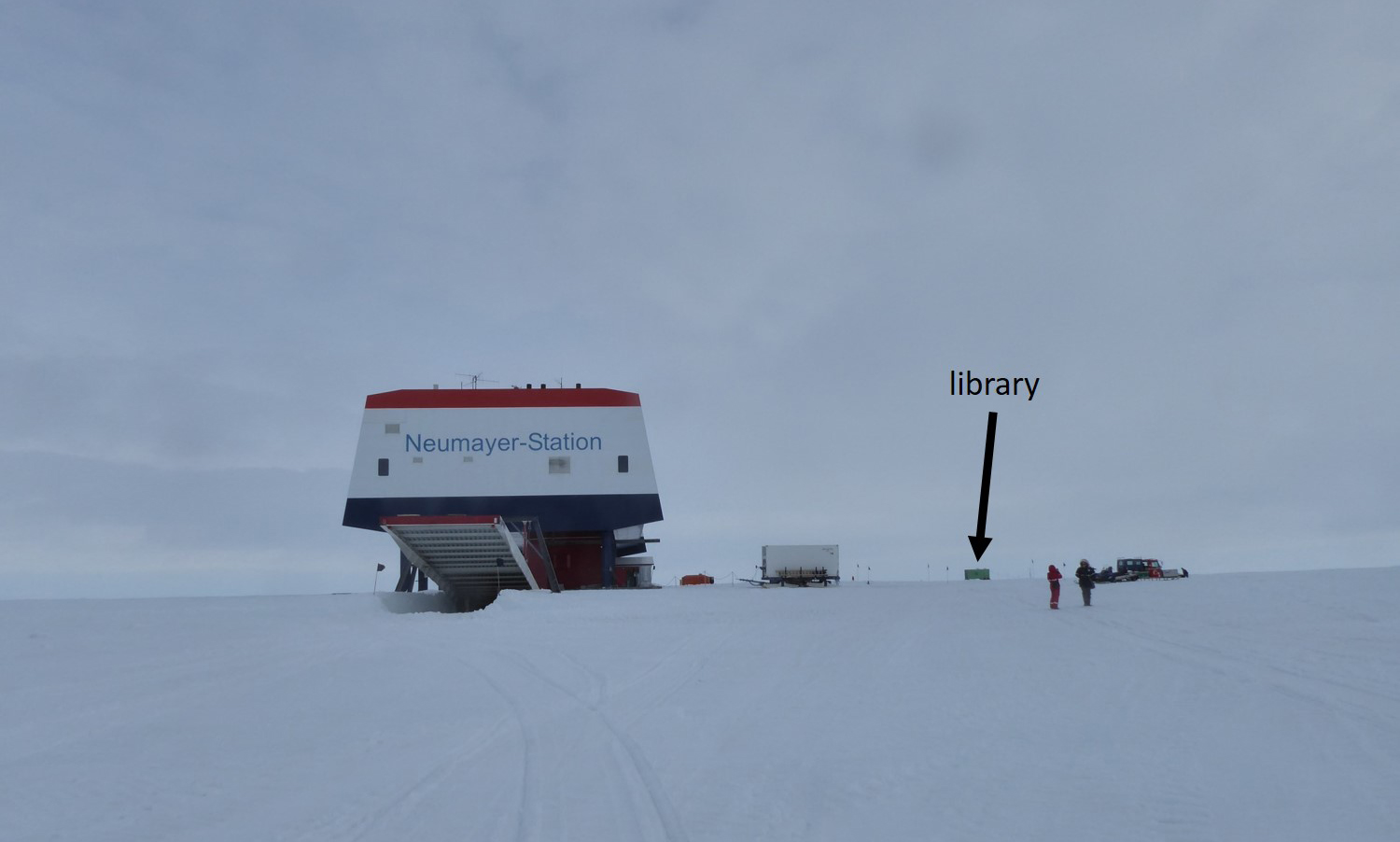
The next day we had bunker watches in groups of two. As said before, Polarstern is the supply vessel of Neumayer III, so we had lots of unloading to do – for example some filling of fuel barrels. All you had to do was to sit on a big fuel barrel and watch it being filled. As soon as it was full, you had to signal the crew on board to switch off the pump and change the pipe to an empty fuel barrel, which was already standing in line, waiting to be filled. It sounds like a dull job, but you have to keep in mind that whilst watching the barrels being filled you saw penguins playing around the ship and we were sitting in this beautiful winter wonderland. But except fuel we also had lots of containers full of e.g. research equipment and spare parts on board which needed to be unloaded (and also some elementary supply, such as candy bars which they had run out of).
After the bunker watch, we were allowed to go for walks (only as far as we could still be seen from the bridge – the weather can change quite fast in Antarctica and there is not too much to orientate yourself, in case of a sudden snowstorm or such). Being able to go for a walk that is longer than going from the bow to the stern of the ship was actually amazing enough by itself. But then going away from the ship far enough to experience the silence of Antarctica was a completely different experience – and what a nice one! On the ship it is always noisy as you always have the engines running. But when you walked far away enough, you had nothing but silence – as deep of a silence you can get.
After these two more relaxing days for us scientists (of course the sampling of the bioassays still continued, but no new stations), the research work continued, once we had left the “North Berth” of Neumayer III.
Charlotte Eich
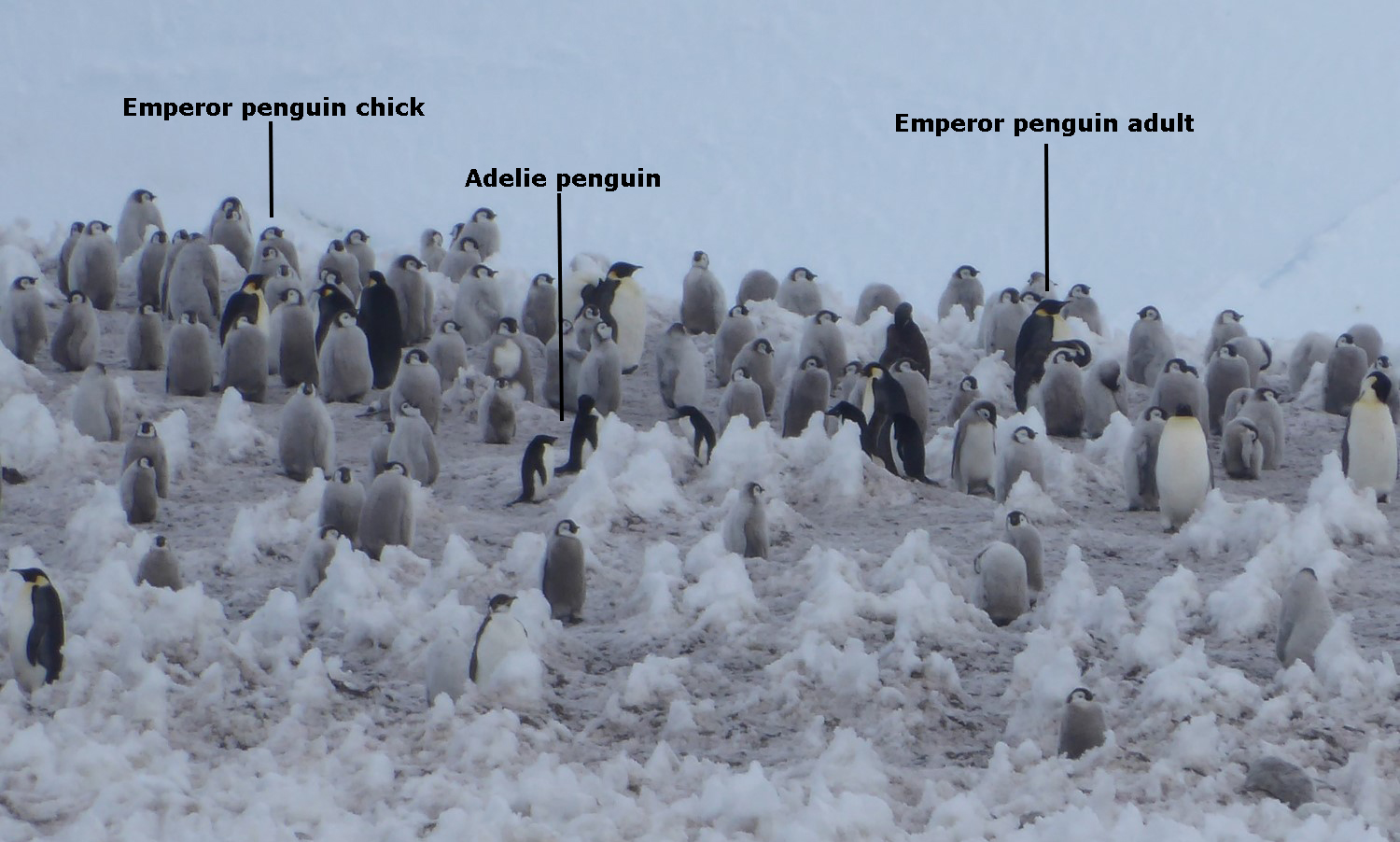
January 11th - Successful bioassays and oliebollen!
We’re approaching halfway through our research expedition, and I’m amazed at how quickly time is moving! We’ve already accomplished a lot, and one of the things I am most excited about is the completion of our first bioassay experiment. We’ve used the incubators that Mathijs told you about in our second blog post to keep our plankton samples happy - we collect these plankton using the Ultra-clean CTD that Sharyn told you about last week, isolate them in bottles, and keep them in the incubators at a constant temperature and exposed to the natural light that they need to grow. For this experiment, we’ve kept our plankton at two different temperatures and added an important micronutrient, iron, to half of the plankton bottles.
We found that those plankton that were kept at higher temperatures and had extra iron grew very quickly! I looked at our plankton under the microscope and saw that we were growing a diverse community of diatoms and another type of phytoplankton called Phaeocystis. Even though these plankton are tiny and we normally need these microscopes to see them, they can sometimes form long chains or big colonies that we can see by eye, when we look carefully at our experiment. One of my favourite things about being at sea is seeing these plankton, in our experiment bottles and under the microscope, and thinking about how tiny they are and yet how important! These plankton form the base of most marine food webs, sequester carbon dioxide from the atmosphere, and produce the oxygen we need to breath.
When I get home to my lab in Canada, my students and I, along with Charlotte from the NIOZ group, will analyze the proteins that these plankton in our experiment and in the natural waters we are sampling are producing and using when they grow. The types of proteins they make, and how much, can tell us a lot about what the plankton are experiencing and how they are interacting with the rest of their ecosystem. There are still lots of mysteries about what controls how these plankton grow, and the bioassays that we’re conducting and the protein measurements that we’ll make will help us understand some of those mysteries.
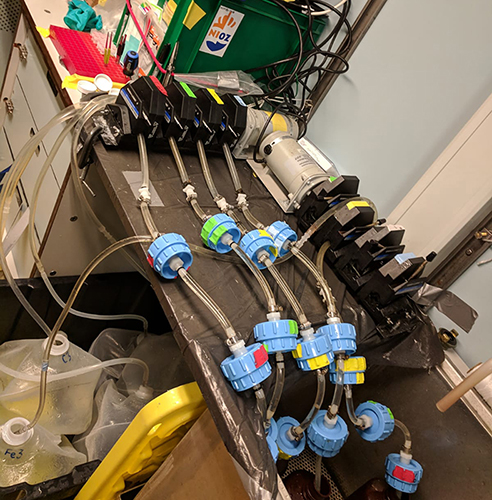
While we were conducting our first bioassay, we also celebrated the New Year. On New Year’s Eve, the Polarstern community prepared a special dinner, BBQ and celebration in the helicopter hanger. The helicopters were moved on deck and in their place, we hung streamers and decorations, including flags from many countries around the world. I was happy to see both the Dutch and Canadian flags hanging in celebration. This was a special New Year’s Eve for me because I got to make and taste my very first oliebollen! This is a tradition I will certainly be bringing home with me to Canada. We got special permission from the ship’s crew to use the galley to prepare enough oliebollen for everyone. Rob shared his special family recipe that added raisins, lemon and apples to this fried treat, and we all took turns frying the dough in the biggest deep-frier I’ve ever cooked in! When they were finished, we took most of them up to the party, but also made sure to visit the bridge and engine room with some especially good oliebollen to share with the crew on duty. When the clock struck midnight, everyone moved to the bridge where Captain hosted us to ring in the New Year with a celebratory toast. We were also treated to a beautiful sight of blue petrels swooping and shimmering in a show for us. It was a New Year’s Eve to remember!
Erin Bertrand
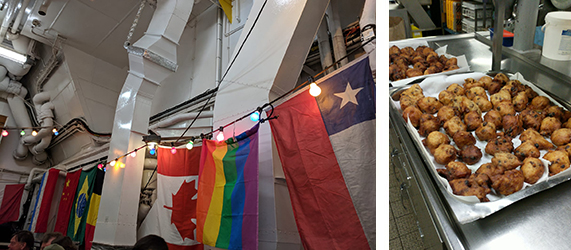
December 29th - Christmas on board of the Polarstern
It has been two weeks since we left Cape Town, and time feels like it is flying by as everybody is getting into the rhythm of eat, sleep, work, repeat mode. The CTD (Conductivity, Temperature and Depth) instrument has regularly been used from the start to gather seawater from different depths of the ocean, which means that there has been liters and liters of seawater samples taken for different analyses. We have two types of CTD's onboard, the AWI CTD and the Ultra-Clean CTD (UCC). The UCC was designed at the NIOZ to gather water with extremely low to no contamination of iron which is a major focus to the FePhyrus project. Unfortunately, during the first deployment of the UCC a problem occurred as some of the sensors malfunctioned so no water came back on board in the bottles.
Sven Ober (we have two Sven's in our group) and Rob worked very hard to figure out what the problem was and after a few days of head scratching and replacing things, they succeeded to make it work on dry land again. It was exciting to finally be able to get the UCC back into the water, however just before it was scheduled to go in, another set-back hit us. A crew member became ill and the decision was made to proceed in a medical evacuation which meant that all scientific work was put on hold. While we steamed to the Russian base of Novo at 15 knots, it meant that we headed for the sea ice a lot earlier than we had anticipated. It took nearly three days to be close enough to Novo so that the crew member could go by helicopter to the base, where they were then placed on a flight back to Cape Town. Due to patient confidentiality, we cannot tell any details however, we can let you know that the crew member is stable and well and we wish them a fast recovery.
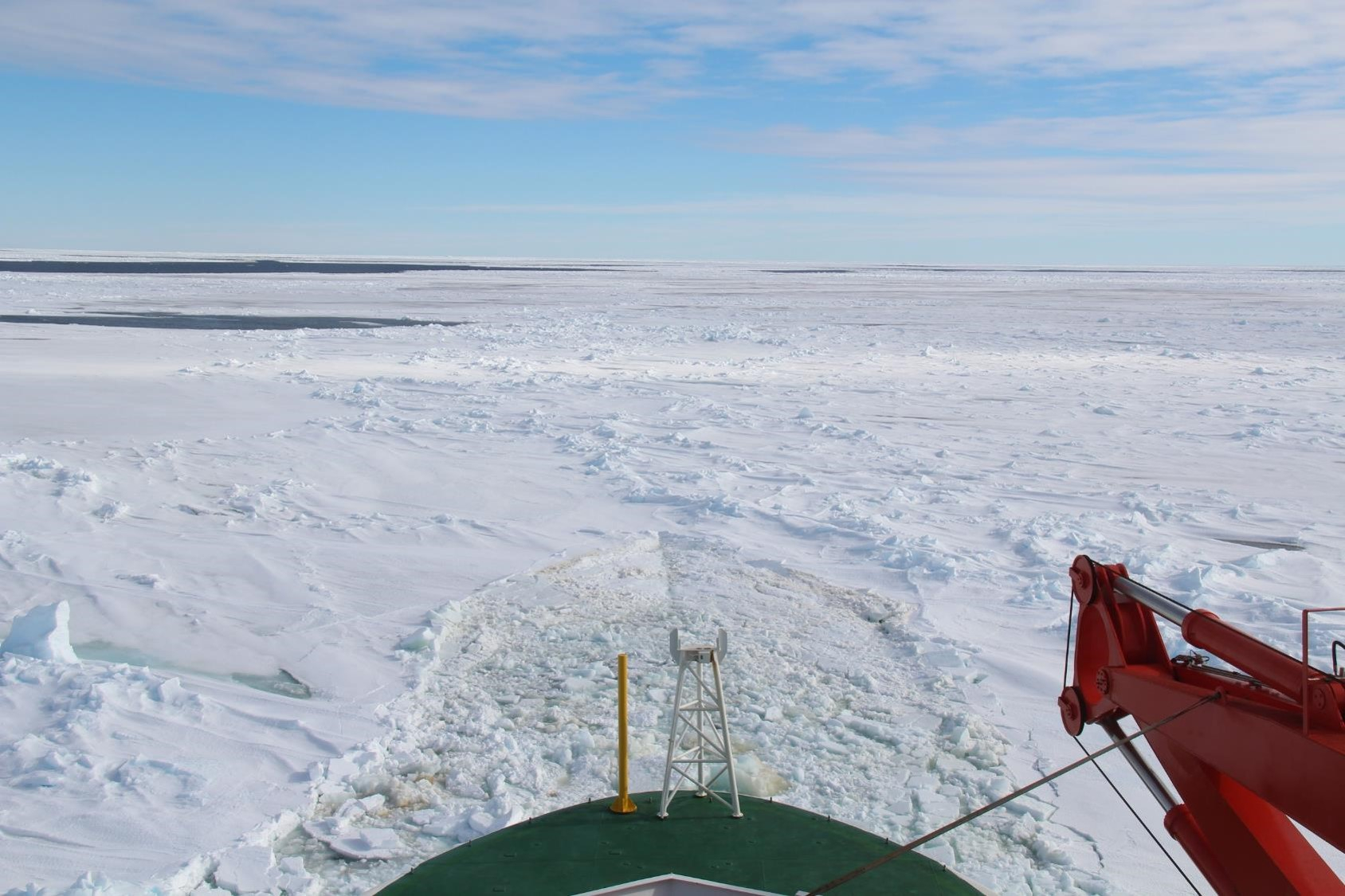
Sea ice during Christmas
All this coincided with the run up to Christmas, and Christmas Eve we celebrated in German style with festive songs sung from an international choir of scientists, readings, a guitar solo from the chief scientist Olaf, followed by a secret visit from Santa so we all had a present to open. Waking up on Christmas day was exciting as we had a white Christmas with ice floes passing by the ship. For many of us it was the first time to experience sea ice and during Christmas day, we got deeper and deeper into the ice and we spent most of the day outside watching the beautiful landscape surrounding us. The different shapes and types of sea ice is fantastic to see, and every now and then we were lucky to spot some penguins and seals. Occasionally the ice was a little thick so we had to reverse and go at it a little faster to break through. The crew on board also made it special by setting up the mess room very festively and we had to make an effort to put on nicer clothes than just our work stuff. I think for many of us here, it will be a Christmas to remember.
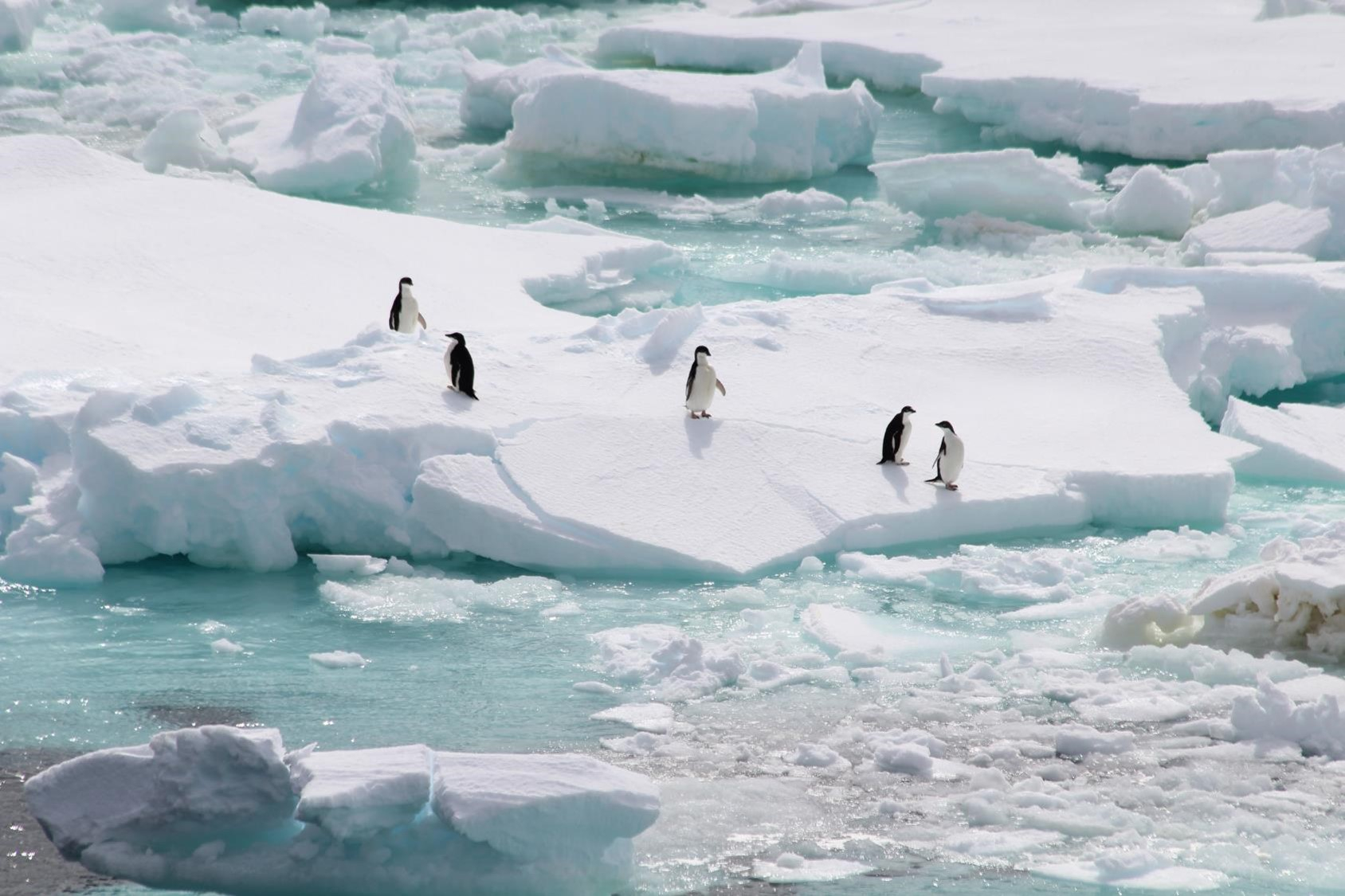
As soon as the patient had been airlifted to Novo and the helicopter had safely returned, the ship made a U-turn and headed straight back to where we left off to do some science. The plan was changed a little to accommodate for the delay and after a few more hours heading back to the open ocean, sampling was commenced in the late hours of Boxing Day. This finally meant that the UCC could be tested again and to the watching eyes of many who had stayed up to see it, there was a cheer of relief when it came back from the sea with all the bottles closed. Although it was during the night, it was still very much light as the sun didn't set in the southern position that we were at. We have also now been able to get ultra-clean water for the biologists to carry out their experiments which is a good team building exercise carrying many 20L containers of clean water up and down the ship every day. Although iron is one the limiting factors in these experiments, there will be a few iron-men after the cruise as this is a good work out for all that are helping out. We are now back in the full rhythm of eat, sleep, work, repeat and are looking forward to the New Year and what new excitement 2019 will bring us.
Sharyn Ossebaar
December 21st - Pro toto quid contribuamus
A new Antarctic expedition on a, for some of us, new research vessel (RV Polarstern). We departed about a week ago and since we are momentarily not allowed to work in our containers on the working deck because of high waves, it is a perfect moment to reflect on the first days of this exiting expedition (keep in mind that while writing this I'm overlooking massive waves hitting the deck). After spending two days of setting up our incubators in the harbor of Cape Town we departed last Saturday two hours earlier than planned for a 7,5 week expedition in the Weddell Sea.
Like always, a lot happened in our first week on the Polarstern. We have all set up our labs and spent some decent time outside to set up the incubators for the bioassay experiments in the best possible way. "The best possible way" basically means a lot of replumbing of hoses and meters and meters of insulation to keep those hoses warm enough for the Antarctic cold. Now that almost everything is ready for sampling, people survived the first wave of seasickness and we spotted the first whales (either fin- or sei whales, so I’ll say fin whales for future stories) I can list some thoughts about this first week:
- It is very exciting to be surrounded by so many people with different backgrounds and research questions. From the acoustics of a minke whale and toothfish ecology to long-term climate observations and -of course- trace metals.
- The ship itself feels like I felt at NIOZ during my first days, a bit of a maze. I'm slowly finding my way on board of the ship though.
- Every day we get a weather update and station plan, which I really appreciate. Beside the weather forecast from the region we’re in right now I'm also completely up to date with the local weather in Germany (it's slowly getting warmer again!).
- Both Stanley and Indah will sing in the Polarstern Chistmas choir, I can't deny I'm highly excited to see this performance!
- The motto for this expedition is pro toto quid contribuamas, which means as much as for all we contribute which I think is a very appropriate motto for an expedition!
The coming two days we will make some speed to, hopefully, avoid part of the bad weather that is waiting on our track. So, from Sunday onwards we are totally ready to sample tons of sea water and incubate this place like crazy. I'm ready and very excited to start! For now we want to wish you all a merry Christmas from the middle of the ocean!
Mathijs van Manen
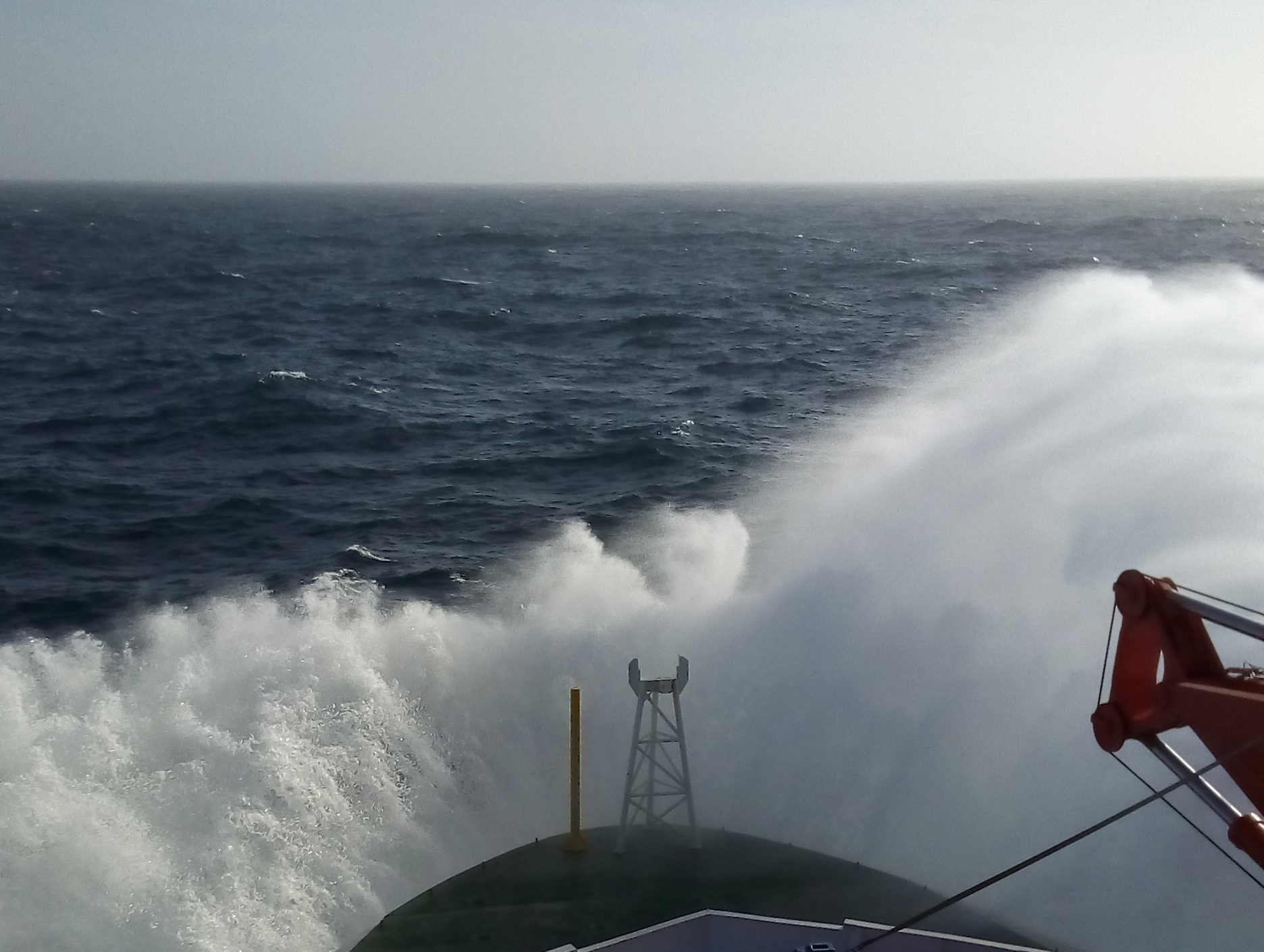
December 17th - Leaving for the Antarctic
We just left Cape Town and the new expedition has started! The last few days have been pretty hectic with traveling to Cape Town and setting up part of our equipment in the harbour already. However, we also found some time to see some nice scenery as our colleagues from Stellenbosch University picked us up after working on the ship during the day, to see the sunset from Chapmans Peak Drive with dinner afterwards. This was definitely a treat!
During installation, we noticed right away that the lid of one of our incubators was damaged during transport. Fortunately, the ship’s agent in Cape Town was able to quickly source a sheet of the polycarbonate that we needed. Together with the carpenter of the Polarstern, we were able to replace the broken part and once the glue has dried, we should be able to use it again!
The first station is planned for tomorrow evening and we are all working hard trying to have everything set up and working before then. This is going to be a bit of a challenge as there is lots to be done beforehand. Notably during unpacking in small lab spaces such as our lab containers, everything becomes a bit chaotic, but slowly but surely, all equipment set-ups are starting to resemble what they are supposed to look like. Indah, Mathijs and Stanley and are setting up their instruments in the clean analytical container where they will be measuring iron and organic iron binding ligands. The incubators are set up high on the ship, Sven Over is working on our Titan sampling system, Sharyn has the nutrient system humming in the nutrient laboratory container and Charlotte, Erin and Sven Pont are setting up their filtration systems in the temperature controlled container.
In the meantime, we are also preparing for Christmas at sea. On Polarstern, it is tradition that the scientists prepare a Christmas Eve ceremony. But, before then there will be lots of water and samples to process to unravel the elusive relationship between metals and the phytoplankton that forms the bottom of the Antarctic food web.
Rob Middag
